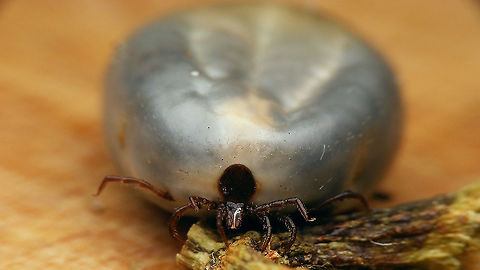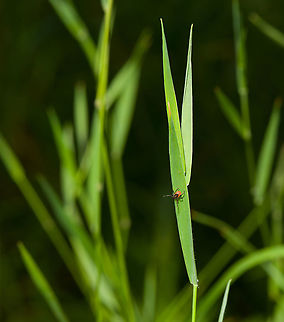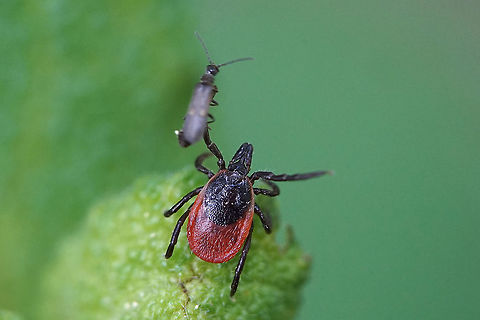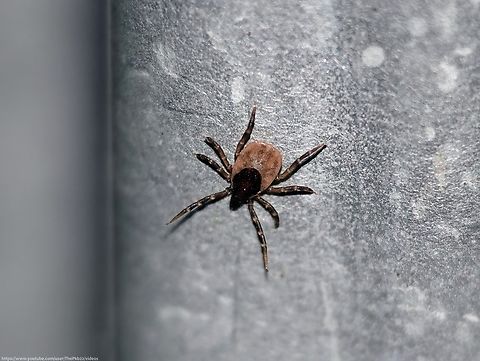
Appearance
In common with other species of "Ixodes", "I. ricinus" has no eyes and is not ornate; it has no festoons. The palpi are longer than they are wide, and there is an anal groove above the anus. It has a hard dorsal shield which covers the entire opisthosoma, but only part of it in females and nymphs. "I. ricinus" is the largest of the three common species of "Ixodes" in the British Isles. Adult males are 2.4–2.8 millimetres long, and unfed nymphs are 1.3–1.5 mm long; females are 3.0–3.6 mm long before feeding and 11 millimetres long when engorged.
Distribution
"Ixodes ricinus" is found across Europe and into neighbouring parts of North Africa and the Middle East, extending as far north as Iceland and as far east as parts of Russia. Its northern limit seems to be determined by environmental factors, including temperature, since a series of mild winters in Scandinavia coincided with an expansion northwards in the range of "I. ricinus"."I. ricinus" is most frequent in habitats where its hosts are plentiful, including woodlands, heaths and forests. It is most prevalent in relatively humid areas, and is absent from much of the Mediterranean Region where summers are dry.

Behavior
"Ixodes ricinus" has a three-host life cycle, which usually takes 2–3 years to complete, although it can take from 1 to 6 years in extreme cases. Adults feed on large mammals such as sheep, cattle, dogs, deer, humans and horses for 6–13 days, before dropping off. An engorged female will lay several thousand eggs and subsequently die. The larvae that hatch do not actively seek a host, and usually feed on insectivores, although they may also find rodents, rabbits, birds, reptiles or bats. They feed for 3–5 days before dropping off and moulting. The resulting nymphs then ascend grasses or twigs to seek their next host, but must return to the moist microclimate at the soil surface if they become dehydrated. The nymphs feed on small to medium-sized mammals.
Evolution
The scientific name of the castor bean tick dates back to the starting point of zoological nomenclature, the 1758 tenth edition of Carl Linnaeus' "Systema Naturae", where it appeared as "Acarus ricinus". Pierre André Latreille split the new genus "Ixodes" from Linnaeus' "Acarus", and "I. ricinus" was chosen as the type species. It has subsequently been redescribed under a number of junior synonyms and subsequent combinations into different genera; these synonyms include "Acarus ricinoides", "Cynorhaestes reduvius", "Cynorhaestes ricinus", "Ixodes megathyreus", "Ixodes bipunctatus", "Cynorhaestes hermanni", "Crotonus ricinus", "Ixodes trabeatus", "Ixodes plumbeus", "Ixodes reduvius", "Ixodes pustularum", "Ixodes fodiens", "Ixodes rufus", "Ixodes sulcatus" and "Ixodes sciuri".References:
Some text fragments are auto parsed from Wikipedia.